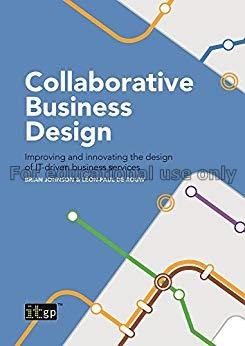Collaborative business design :improving and innovating the design of It-driven business services /Brian Johnson
Author : Johnson, Brian

Only by understanding IT-driven business services and anchoring them in a service design statement (SDS) can enterprises translate business needs into IT-intensive business services.
In Collaborative Business Design – Improving and innovating the design of IT-driven business services, Brian Johnson and Léon-Paul de Rouw comprehensively explain how to use business service design (BSD) to formulate an effective SDS that will help business and IT cooperate to create robust, efficient services that support business requirements.
Collaborative Business Design delves into the inner workings of services, with the aim of making sure that each side – business and IT – understands the other’s needs and drivers so that services can deliver what is required, expected and promised throughout their lifecycle. It:
- Examines the gap in understanding between IT and business.
- Introduces BSD – an analytic approach to understanding the characteristics of IT-driven business services.
- Provides an overview of the components and characteristics of IT-driven business services.
- Considers the different parts of the BSD and SDS.
- Offers insight into the design of IT-driven business services using BSD.
- Discusses practical consequences for business transformation to continuously define, develop and improve services that customers want to use.
Full of useful diagrams and examples (and quotations from an unusual range of sources including Star Trek, Mick Jagger and Oscar Wilde), Collaborative Business Design explains how to guide the development, building, programme management, and maintenance of IT-driven business services.
Business Service Design (BSD) is a simple approach to designing the overarching architecture of any IT-driven business service.
It merges the pragmatism and logic of the UK Government Gateway method with service blueprinting and the stakeholder approach to gaining consensus.
BSD is not an architecture for software development or for technology support – it complements existing frameworks such as TOGAF, IT4IT, BiSL® Next and ITIL® by focusing on business architecture, a subject rarely discussed before designing an IT-intensive, complex business service
| Barcode | Call No. | Volume | Status | Due Date | Total Queue | |
|---|---|---|---|---|---|---|
| 1040008927 | IE00127 | On Closed Stack | 0 | Please Login |
Related Book